
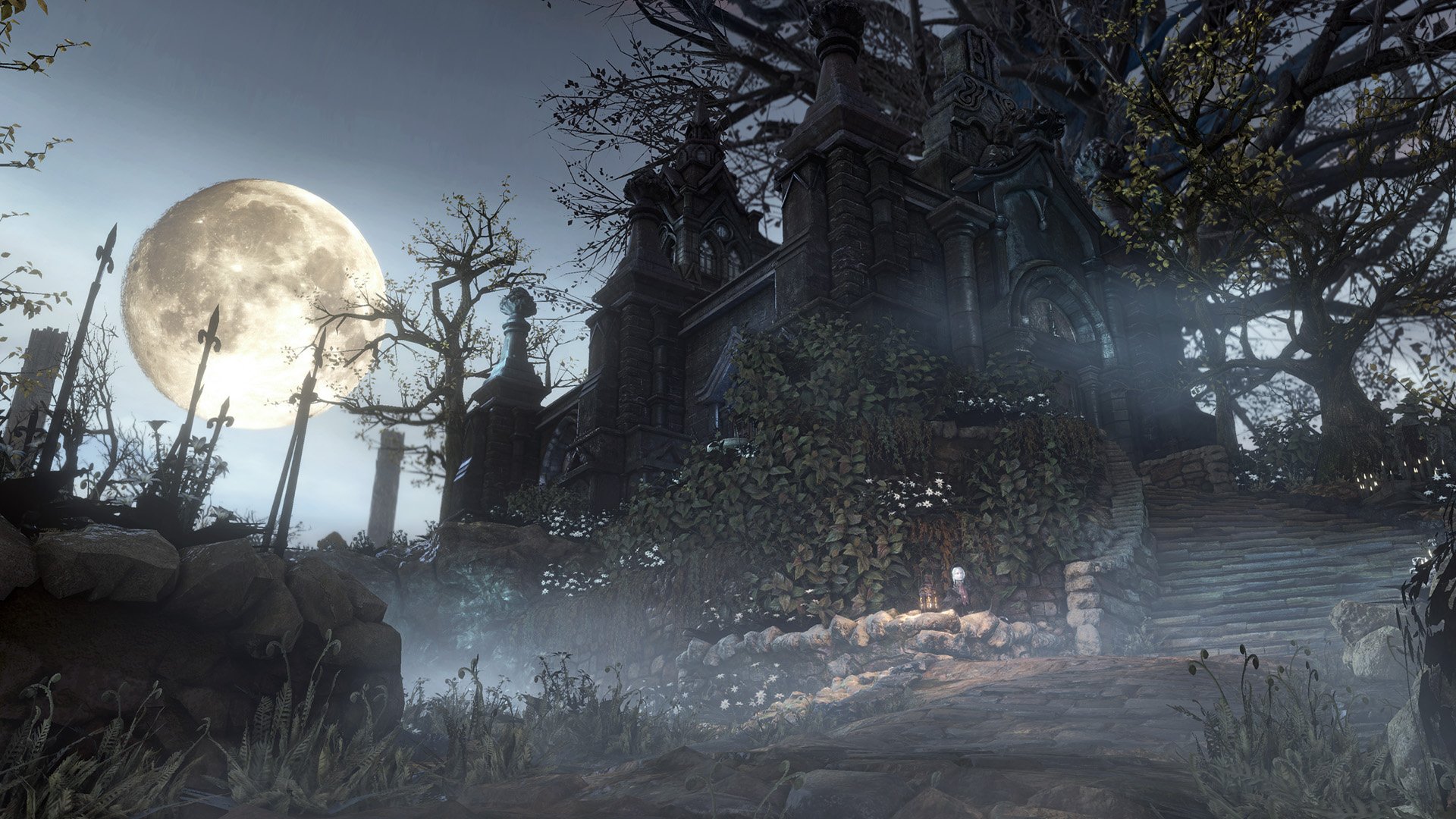


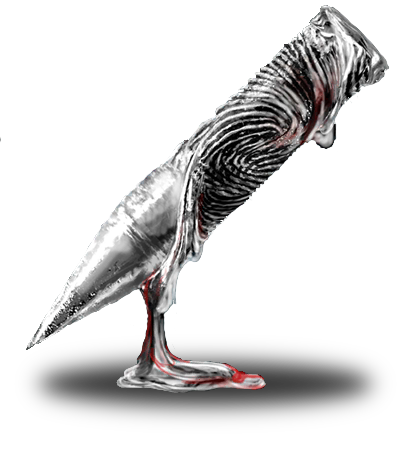
Hunter
Clad in dark regalia, a human anticipates the wild claw of a werewolf. Moments before impact, the human loads a silver bullet into his pistol and fires, staggering the lycanthrope. Seizing the opportunity, the human retaliates, cutting the wolf deeply with a silvered sword.
Rolling up her sleeves, a half-orc grabs the axis of two circular saws, slotting it onto the head of a mace. She then activates the mechanism, turning the weapon into a howling maw of grinding teeth. She marches towards a horde of mutants, her transformed weapon in front.
An elf reels from a critical blow. Swiftly, he retrieves a blood vial from his pouch and consumes the crimson liquid. Rejuvenated, he stands once more. From behind his back, he retrieves an urn of oil. Dowsing the gibbering mouther in oil, he thrusts a torch into its core, and its muttering turns to shrieks as it erupts in flames.
These well-equipped adventurers are hunters, warriors who have adapted to their quarry through alchemy, a unique arsenal of weaponry, and their specialised form of magic.
The Eternal Hunt
Hunters are bound to an unending oath in blood. This oath is known as The Hunt and once made, cannot be broken. Doing so earns the ire of every sworn hunter and marks you as prey. This oath charges hunters to seek and destroy those who are a threat to civilization, particularly those with an insidious agenda or means of infiltration. Although hunters are well-suited to face any foe, they specialise against three: the warped yet earthly beasts and monstrosities, and the eldritch aberrations from beyond the stars.
For hunters, The Hunt is an eternal responsibility, only released upon death. And still, even in death, some hunters still serve. The ritual undergone by hunters to initiate the hunt is known as The Transfusion, and it remains a closely guarded secret among hunters. It is not merely a rite of passage but a magical ritual that enhances one's physiology through the power of blood magic.
Hunters have access to a wide repertoire of tools and weapons devised and perfected through generations of the covenants: alchemical reagents, advanced trick weapons, and magic syphoned through blood and accursed artefacts.


Vengeful Nomads
The covenants that bind the hunters hold no land or strongholds; instead, they set up gatherings and meetings for important matters. Otherwise, hunters are solitary and stay on the move, searching for their next quarry. Veteran hunters learn ways to sequester themselves and valuable artefacts from vengeful prey by creating secret demiplanes. Many novice hunters have been undone by their solitary tendencies, outnumbered or outmatched by those they hunt.
As adventurers, hunters are accompanied by equally able heroes who often have a similar desire to slay creatures that threaten civilization. Hunters can find a special kinship with paladins and rangers who share their values but find a mutual respect with any hero who would stand beside them in battle. Many adventurers eventually find someplace to settle, a home of some kind, and while hunters are permitted to hold land, they know the risks of staying in one place too long and become fidgety and restless when not on the move.
Creating a Hunter
When building your hunter character, consider what events led to you taking this path. Were you saved from a monstrous creature by a hunter and asked them to mentor you? Were you recruited by one of the hunter covenants through a trial or test, or even due to your history before your training? Or perhaps you hold a grudge against a particular monster and sought out the hunters to train so you might defeat that creature yourself. You might even be self-taught through trial and error, accumulating recipes and blueprints that you eventually deciphered to utilise the weapons of the hunters without their blessing.
Consider which covenant you are part of, which can be found at the end of this class. Are you more scientifically and alchemically inclined? Do you have a keen interest in eldritch, unnatural artefacts? Or do you simply have a bloody hatred for the monsters you call quarry? Why did you join up with a band of adventurers? Do you find discomfort in sharing space with others, or do you take pleasure in their company?
Quick Build
You can make a hunter quickly by following these suggestions. First, make Dexterity your highest ability score. Your next-highest score should be Constitution, or Intelligence if you plan to adopt the Aqua Regia or Eldritch Church covenant. Second, select the urchin or investigator background.
Class Features
As a hunter, you gain the following class features.
Hit Points
- Hit Dice: 1d10 per hunter level
- Hit Points at 1st Level: 10 + your Constitution modifier
- Hit Points at Higher Levels: 1d10 (or 6) + your Constitution modifier per hunter level after 1st
The Hunter
| Level | Proficiency Bonus | Features | Hunter Die |
|---|---|---|---|
| 1st | +2 | Hunter Tools, Unarmoured Defence | d4 |
| 2nd | +2 | The Hunt Begins, Trick Weapons | d4 |
| 3rd | +2 | Covenants | d4 |
| 4th | +2 | Ability Score Improvement | d4 |
| 5th | +3 | Extra Attack, Gun Parry | d6 |
| 6th | +3 | Covenant Feature | d6 |
| 7th | +3 | Evasion | d6 |
| 8th | +3 | Ability Score Improvement | d6 |
| 9th | +4 | Hunter Tools Improvement | d8 |
| 10th | +4 | Gun Parry Improvement | d8 |
| 11th | +4 | Blood Gems | d8 |
| 12th | +4 | Ability Score Improvement | d8 |
| 13th | +5 | Covenant Feature | d10 |
| 14th | +5 | Hunter's Dream | d10 |
| 15th | +5 | Gun Parry Improvement | d10 |
| 16th | +5 | Ability Score Improvement | d10 |
| 17th | +6 | Hunter's Insight | d12 |
| 18th | +6 | Covenant Feature | d12 |
| 19th | +6 | Ability Score Improvement | d12 |
| 20th | +6 | Venari Aeternam, Gun Parry Improvement | d12 |
Proficiencies
- Armour: Light armour
- Weapons: Simple weapons, martial weapons, firearms
- Tools: Alchemist's tools
- Saving Throws: Dexterity, Intelligence
- Skills: Choose two from Acrobatics, Arcana, Insight, Investigation, Nature, Perception, Religion, Stealth, and Survival
Equipment
You start with the following equipment, in addition to the equipment granted by your background:
- (a) one martial weapon or (b) one simple weapon
- (a) three daggers or (b) any simple weapon
- (a) a dungeoneer's pack or (b) an explorer's pack or (c) a monster hunter's pack
- A pistol


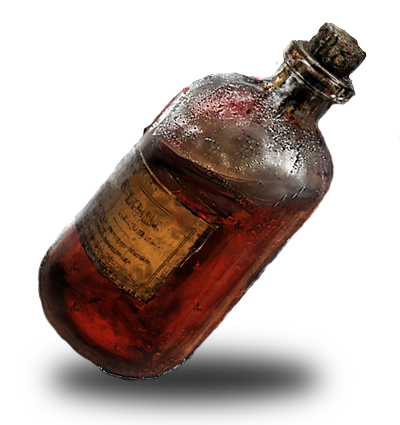
Hunter Tools
Hunters must always be prepared for whatever foe they encounter, be it a beast, a fellow accursed kin, or something worse. You gain a number of Hunter Dice equal to your Hunter level. These dice increase in size as you reach certain levels in this class. You regain all Hunter Dice when you finish a long rest.
Whenever you complete a short or long rest, you may expend any number of your Hunter Dice to craft one of the following items per die:
Blood Vial. You regain your Hunter Die + proficiency bonus hit points when you drink this potion.
Quicksilver Bullet. Whenever you make a ranged weapon attack using a firearm, you may insert a quicksilver bullet into the firearm as part of the attack. On a successful hit, you deal additional damage equal to your Hunter Die. This ammunition is silvered for some creatures that have immunity or resistance to nonmagical weapons but are susceptible to silver weapons.
Saving Throws. Some of your tools require your target to make a saving throw to resist the tool's effects. The saving throw DC is calculated as follows:
Tool save DC = 8 + your proficiency bonus + your Intelligence modifier
Your Hunter Die is a d4 and becomes a d6 at 5th level, a d8 at 9th level, a d10 at 13th level and a d12 at 17th level.
Unarmoured Defence
While you are wearing no armour and not wielding a shield, your Armor Class equals 10 + your Dexterity modifier + your Intelligence modifier.
The Hunt Begins
The Transfusion is complete. You have embraced the way of the covenants and adopted the mantle of hunter. Beginning at 2nd level you gain the following benefits:
- If you have taken damage from a hostile creature since your last turn, your successful melee weapon attacks allow you to regain hit points equal to half the damage roll, rounded down (minimum of 1). The maximum amount of hit points you can regain per round is equal to twice your hunter level. This feature has no effect against creatures incapable of bleeding.
- You have advantage on Wisdom (Survival) checks to track beasts, monstrosities, and aberrations, as well as on Intelligence checks to recall information about them.
Trick Weapons
As a hunter, you have learned to utilise unique weapons designed by the covenants known as trick weapons. While others may be capable of wielding these weapons, you are able to fully realise their potential. Starting at 2nd level you gain the following benefits:
- You possess a number of trick weapons equal to your proficiency bonus. Whenever you reach a new level in this class, you can replace one trick weapon you own with a different trick weapon.
- Trick weapons have two forms: a standard form and an alternate form. On your turn, you can swap between these forms using a bonus action. If you holster or drop a trick weapon while it is in its alternate form, it immediately reverts to its standard form.
- Every trick weapon has an Active Ability while in its alternate form and can be activated using an action. Once you activate a trick weapon's Active Ability you must complete a short or long rest before you can activate it again. Melee weapon attacks made using an Active Ability do not restore hit points through The Hunt Begins.
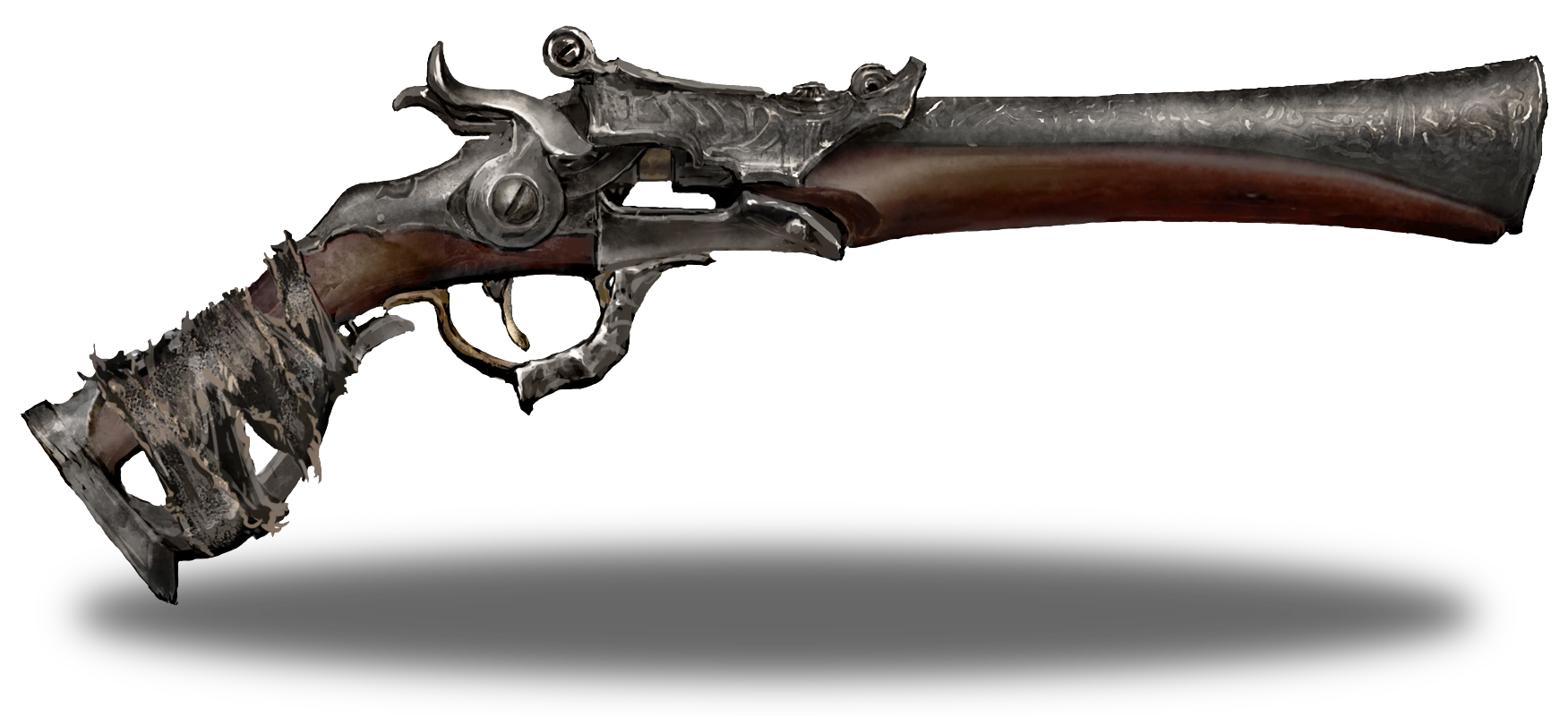
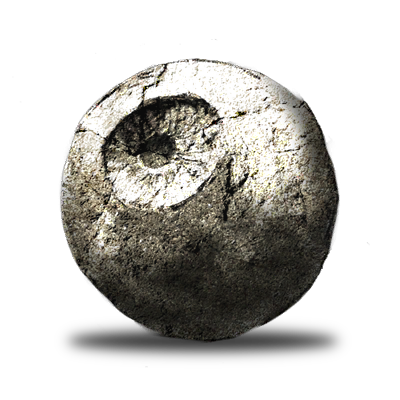
- Some trick weapons are capable of performing a Transformation Attack which will change form as part of the attack. Whenever you take the Attack action on your turn, you can perform a Transformation Attack in place of one of your attacks. Transformation Attacks can only be made on your turn and while a trick weapon is in its standard form. If a weapon's new form requires two hands to wield effectively, you can holster an item you are holding in your other hand as part of the attack. You can only perform one transformation attack per round.
Saving Throws. Some of your trick weapons require your target to make a saving throw to resist the weapon's effects. The saving throw DC is calculated as follows:
Trick save DC = 8 + your proficiency bonus + your Strength or Dexterity modifier (your choice)
The full list of trick weapons can be found at the end of this class.
Covenant
At 3rd level, you swear yourself to a covenant: the Covenant of Executioners, the Covenant of Aqua Regia, or the Covenant of The Eldritch Church, all detailed at the end of the class description. your covenant grants you features at 3rd level and again at 6th, 13th, and 18th level.
Ability Score Improvement
When you reach 4th level, and again at 8th, 12th, 16th, and 19th level, you can increase one ability score of your choice by 2, or you can increase two ability scores of your choice by 1. As normal, you can't increase an ability score above 20 using this feature.
Extra Attack
Beginning at 5th level, you can attack twice, instead of once, whenever you take the Attack action on your turn.
Gun Parry
Starting at 5th level, when you are the target of a creature's melee weapon attack, you can use your reaction to gain a bonus to your AC equal to your proficiency bonus for the duration of the attack.
As part of the reaction, you insert a Quicksilver Bullet into a firearm you are holding and make a ranged weapon attack against the attacking creature.
If the attack made against you is a miss, the next time you hit that creature with a melee weapon attack before the end of your next turn, you deal additional damage equal to your Hunter Die. Additionally, this attack will critically hit on a roll of 19 or 20. You can use this feature if you have at least one Quicksilver Bullet.
This feature becomes more powerful at certain levels in this class: The additional damage becomes two Hunter Die and will critically hit on a roll of 18 to 20 at 10th level, three Hunter Die and will critically hit on a roll of 17 to 20 at 15th level, and four Hunter Die and a successful hit is a critical hit at 20th level.
Evasion
At 7th level, your instinctive agility lets you dodge out of the way of certain area effects, such as a blue dragon's lightning breath or a fireball spell. When you are subjected to an effect that allows you to make a Dexterity saving throw to take only half damage, you instead take no damage if you succeed on the saving throw, and only half damage if you fail.
Hunter Tools Improvement
Your prowess and familiarity with your tools have grown. Beginning at 9th level you gain the following benefits:
- You can quaff a Blood Vial as a bonus action, instead of an action.
- Your Quicksilver Bullets are +1 Ammunition.
- As a bonus action, you can spend a Hit Die to gain a Quicksilver Bullet.
Additionally, you can now use your Hunter Dice to craft the following items per die:
Pebble. As an action, you can throw this pebble at a creature within range. The pebble has the finesse and thrown (20/60 ft) properties and deals 1 bludgeoning damage on a hit. If the target creature is currently flying or climbing and is Large or smaller, it must make a Strength saving throw or be knocked prone.
Molotov Cocktail. As an action, you can throw this bottle at a location you can see within 30 feet. Any creature within 10 feet of where it lands must make a Dexterity saving throw. A target takes your Hunter Die + Intelligence Modifier fire damage on a failed save, or half as much damage on a successful one.
Blood Gems
You have learned the secrets of collecting Blood Gems and harnessing their sanguine potential. Starting at 11th level you can collect Blood Gems from creatures you have slain whom are capable of bleeding. You can use these gems to enhance your trick weapons. You can only collect one gem from a creature. If you are capable of collecting more than one type of gem from a creature, you choose which gem you collect.
Blood Stone Shard. These shards can be collected from a slain creature with a Challenge Rating of at least 1. Applying three of these shards to one of your trick weapon transforms it into a nonmagical +1 weapon.
Twin Blood Stone Shard. These twin shards can be collected from a slain creature with a Challenge Rating of at least 5. Applying three of these twin shards to one of your +1 trick weapons transforms it into a nonmagical +2 weapon.
Blood Stone Chunk. These chunks can be collected from a slain creature with a Challenge Rating of at least 9. Applying three of these chunks to one of your +2 trick weapons transforms it into a nomagical +3 weapon.
Blood Rocks. These rocks can be collected from a slain creature with a Challenge Rating of at least 13. Applying three of these rocks to one of your +3 trick weapons transforms it into a legendary magical weapon and gains a feature related to each creature from which you collected a blood rock. Only one trick weapon can be legendary at a time, and your legendary trick weapon requires attunement.



Additionally, for every upgrade a trick weapon receives, it gains a 'Rune Slot'. A +1 trick weapon has one slot, +2 trick weapons have two slots, +3 trick weapons have three slots and a legendary trick weapon has four slots.
These slots can be filled with hunter runes that grant benefits and modifications to your trick weapons. Hunter Runes are described at the end of this class.
Hunter's Dream
Hunters serve an eternal cause. Their quarry often live for millennia, and slaying them is sometimes not their final death. Thus, seasoned hunters learn to create a safe haven from their foes. At 14th level, you can cast the Demiplane spell once per day. In addition, this version of the spell has the following modifications:
- The demiplane is not an enclosed space; rather, it is an island on an endless, impassable plane, such as an ocean, a sea of fog or a bottomless void.
- The demiplane may extend 100 feet in each dimension and can manifest structures, objects, decorations and weather of your choice. Anything created by the demiplane dissipates into smoke if it is removed.
While within your own demiplane and the spell duration has expired, you gain the following benefits:
- If you complete a long rest, you regain all of your hit dice and gain the benefits as if you were the target of the spell Greater Restoration.
- You can cast the Plane Shift spell at will.
Hunter's Insight
You have delved into the depths of inhuman knowledge. You see what should never be seen and know that which should be forgotten. At 17th level you gain the following benefits:
- You have truesight with a range of 60 feet.
- You can understand, read, and write Deep Speech, but you cannot speak it unless you do so telepathically.
- Whenever you make a check related to beasts, monstrosities, and aberrations using your The Hunt Begins feature, you can add double your proficiency bonus to the check, regardless of whether the check uses a skill or if you lack proficiency in the relevant skill.
Venari Aeternam
Upon reaching 20th level, you have become the apex of your kind. Your talents and power rival that of the First Hunters; however, the Hunt is not over, and perhaps it never shall be. You gain the following benefits:
- When you complete a short rest, roll your Hunter Die. You regain that many Hunter Dice and can use them for crafting when finishing this rest.
- When you die, your body and equipment dissipate into smoke, and you immediately wake up in your Hunter's Dream with all of your belongings and 1 hit point. This feature can only occur once between long rests. Certain items on your person may be left behind at the DM's discretion.
Blood Rock Features
A Legendary trick weapon is capable of granting you a wide variety of features, determined by which creatures you collect blood rocks from. Work with your DM to determine which features you are able to gain from each blood rock.
Examples include immunity to cold damage from an Adult White Dragon, Devil's Sight or Magic Resistance from an Ice Devil, or a Storm Giant's Amphibious or Innate Spellcasting feature. While you are capable gaining any feature from a given creature, the DM has the final say on what you can choose, and might modify the feature to be more suitable for a player.
Covenants
All Hunters swear themselves to The Hunt, however, eventually they will also commit themselves to one of the covenants. Holy orders that seek to perfect their hunting through different methods, strategies or tools.
Covenant of Executioners
The Covenant of Executioners is perhaps the most straightforward and arguably the most effective. These Hunters focus on mastering additional trick weapons and learn to enhance their trick weapons further. Executioners are often deft, almost dancer-like in their motions or devastating in their blows, utterly decimating their quarry with malice and hatred.
Additional Trick Weapon
Beginning at 3rd level, you gain an additional trick weapon.
Deadly Techniques
Starting when you choose this covenant at 3rd level, you can expend your Hunter Dice to add them to the attack and damage rolls made with your trick weapons. You can add Hunter Dice to your attack rolls before or after you make the roll, but before any effects of the attack are applied. You can add a maximum amount of Hunter Dice to a single weapon attack equal to your proficiency bonus.
For example, at 3rd level, if you expend one of your Hunter Dice to add a d4 to your weapon attack roll and you hit, you can then expend one of your Hunter Dice and add a d4 to your weapon damage roll.
Or at 5th level, if you add no Hunter Dice to your attack roll, you can expend up to 3 Hunter Dice to add 1d6 per Hunter Dice to the damage roll.


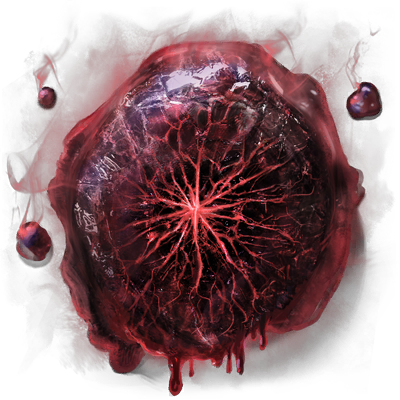
Additional Trick Weapon
At 6th level, you gain an additional trick weapon.
Magical Trick Weapons
Starting at 6th level, your trick weapons count as magical for the purpose of overcoming resistance and immunity to nonmagical attacks and damage.
Additionally, you can turn a magic weapon you are proficient with into one of your trick weapons by undergoing a 1-hour ritual. A magic weapon can become any trick weapon that shares its weapon type with the trick weapon's standard or alternate form, and it magically assumes the form of the trick weapon. This still counts against the number of trick weapons you possess.
Additional Trick Weapon
At 13th level, you gain an additional trick weapon.
Blood Runes
You have learned new runes unique to your covenant. Beginning at 13th level, you can insert these runes into your trick weapons’ rune slots in addition to your hunter runes:
Tier 1 Runes
- Rune of Righteousness. While this rune is inserted, the trick weapon deals an additional weapon damage die if the target creature is an aberration or a humanoid with the evil alignment.
- Rune of Serration. While this rune is inserted, the trick weapon deals an additional weapon damage die if the target creature is a beast or monstrosity.
Tier 2 Runes
- Rune of Brutality. While this rune is inserted, you roll an additional weapon damage die when determining the extra damage for a critical hit with a melee attack with this trick weapon.
Additional Runes. For every rune inserted, roll an additional weapon damage die when determining the extra damage for a critical hit with a melee attack with the trick weapon.
Tier 3 Runes
- Rune of Slaughter. While this rune is inserted, reducing a hostile creature to 0 hit points with the trick weapon allows you to roll an additional damage die when making melee weapon attacks with the trick weapon. This effect lasts until the end of your next turn. If you reduce another creature to 0 hit points, you roll an additional weapon damage die for every creature reduced to 0 hit points and this effect is extended until the end of your next turn.
Additional Trick Weapon
At 18th level, you gain an additional trick weapon.
Contempt
You have gained the Hunter’s Insight and learned dark, terrible truths. But despite these mind-shattering revelations, your conviction has only deepened. You now not only know that you must destroy these heretical abominations, but you also understand why. And you will not be satisfied until you are knee-deep in blood and gore.
At 18th level, you gain the following benefits:
- You are no longer limited in how many hit points you can regain per round with your The Hunt Begins feature.
- You become immune to the frightened and charmed conditions.
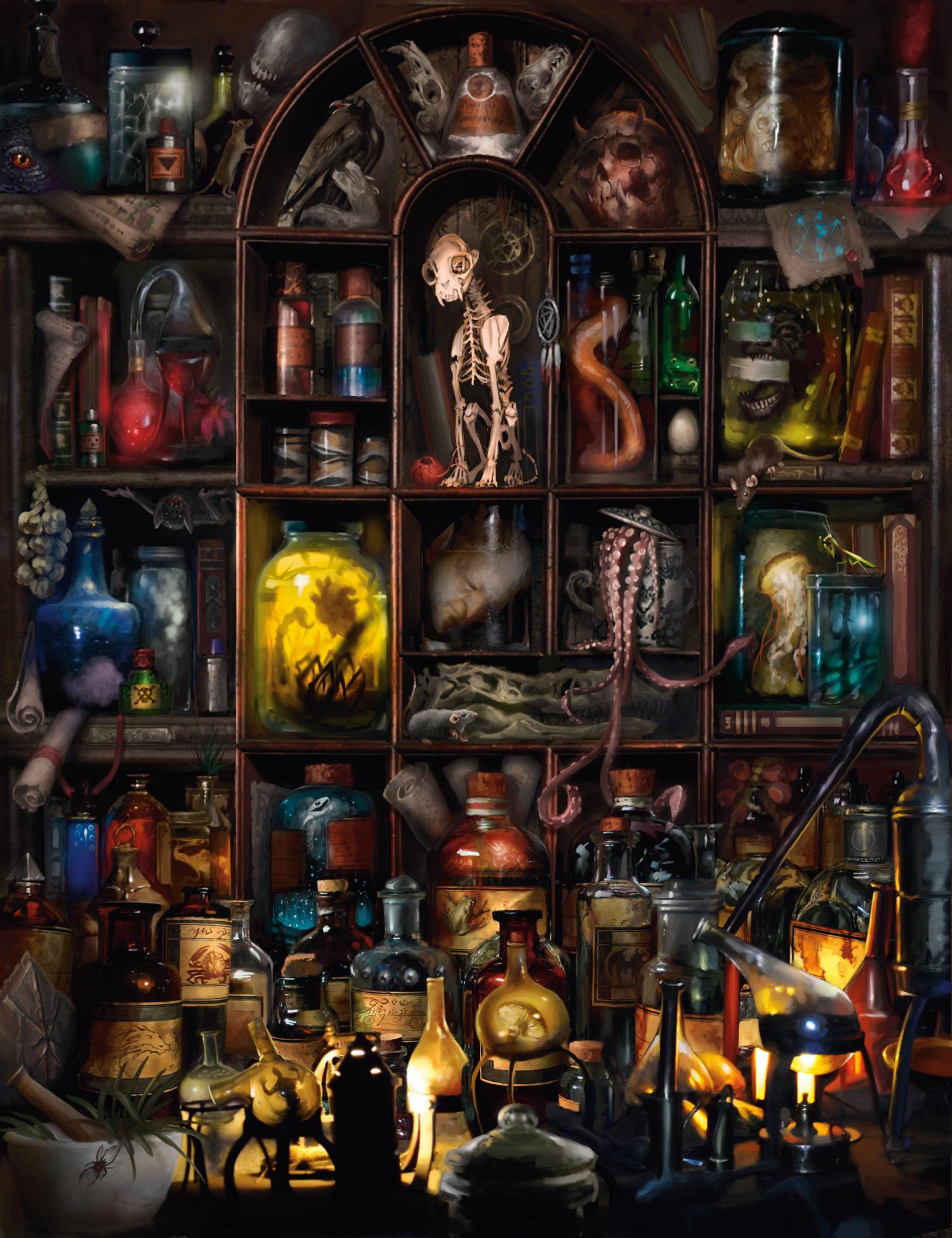

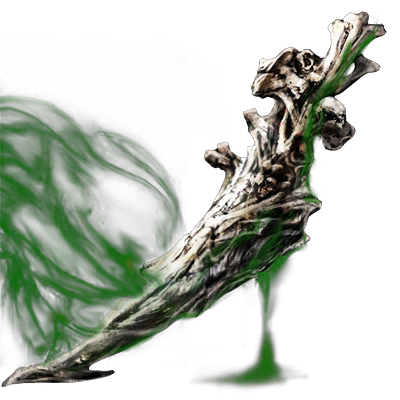




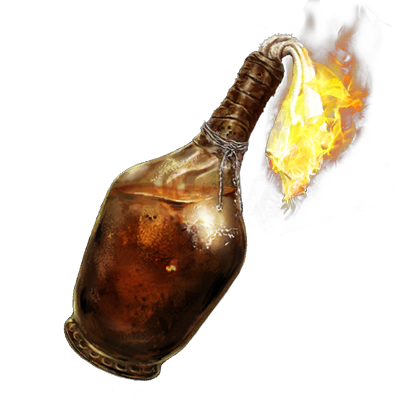
Covenant of Aqua Regia
The Covenant of Aqua Regia specialises in alchemical mixtures and reactions to target the weaknesses of their quarry. These hunters collect ingredients from both the world and the creatures in it, and through these ingredients, learn to enhance the potency of their creations and develop new weapons.
Potent Alchemy
Beginning when you choose this covenant at 3rd level, you can expend additional Hunter Dice when you craft items with your Hunter Tools feature. You can spend a number of Hunter Dice up to your proficiency bonus to craft a single item.
For example, at 3rd level, you can craft a Blood Vial using two Hunter Dice, making that Blood Vial restore an amount of health equal to 2d4+2. Or at 5th level, a Quicksilver Bullet crafted with three Hunter Dice would deal 3d6 additional damage on a successful hit.
Additionally, some of your items gain additional effects when crafted using multiple Hunter Dice.
Resourceful
Beginning at 3rd level, you gain an additional number of Hunter Dice equal to your proficiency bonus. These extra dice are added to your pool of Hunter Dice.
Additional Recipes
At 6th level, you learn two recipes of your choice from the following hunter recipes:
- Blue Elixir As an action, you can drink this potion to become nearly transparent and become lightly obscured. If you expend three Hunter Dice when crafting this item, drinking this potion grants the effects of the invisibility spell (no concentration required). If you expend six Hunter Dice when crafting this item, drinking this potion grants the effects of the greater invisibility spell (no concentration required). This potion lasts 1 minute.
- Lead Elixir As an action, you can drink this potion to gain the effects of the stoneskin spell (no concentration required). If you expend three Hunter Dice when crafting this item, drinking this potion also makes you immune to the incapacitated and stunned conditions. If you expend six Hunter Dice when crafting this item, drinking this potion also grants resistance to all damage. This potion reduces your speed by 10 feet and lasts 1 minute.
- Numbing Mist. As an action, you can throw this bottle at a location of your choice within 30 feet. A cloud of mist with a 20-foot radius then forms centred where the bottle landed. The area is lightly obscured, and creatures within this mist cannot regain hit points by any means. This mist lasts a number of rounds equal to the amount of Hunter Dice used to craft this bottle.
- Oil Urn. You can throw this urn at a creature in place of one of your attacks with the Attack action. The Urn has the finesse and thrown (20/60 ft) properties. On a hit, the creature is covered in oil. If the target takes any fire damage before the oil dries (1 minute), the target takes an additional two Hunter Die fire damage for every one of your Hunter Dice expended to make this urn.
- Poison Dagger. You poison a dagger, which deals an additional Hunter Die poison damage when you hit a creature. That creature must make a Constitution saving throw or become poisoned for a number of rounds equal to the amount of Hunter Dice expended to make this dagger. The poison is expended after one use.
- Shaman Bone Blade. As part of the Attack action you can attack a creature with this dagger. On a successful hit, the creature must make an Intelligence saving throw or be subjected to the effects of the enemies abound spell with the following modifications:
- The creature does not make a new saving throw when it takes damage.
- The effect’s duration is a number of rounds equal to the amount of Hunter Dice expended to make this dagger. Once you successfully hit a creature or throw this dagger, it breaks and becomes unusable.
Papers
At 6th level, you learn how to craft Papers that can apply temporary bonuses to your weapon attacks. As an action, you can apply a Paper to one of your trick weapons, causing it to deal an additional Hunter Die damage of one of the following types: acid, cold, fire or lightning. This effect lasts for 1 minute. Once you use this feature, you must finish a short or long rest before you can use it again.
Additional Recipes
At 13th level, you learn two more hunter recipes of your choice.
Alchemical Runes
You have learned new runes unique to your covenant. Beginning at 13th level, you can slot these runes into your trick weapons’ rune slots in addition to your hunter runes:
Tier 1 Runes
- Rune of Discharge. While this rune is inserted, select one of the following damage types: acid, cold, fire or lightning. The trick weapon’s Active Ability deals an additional Hunter Die damage of your chosen type. This additional damage only applies to one instance of damage.
Additional Runes. For every rune inserted, the trick weapon's Active Ability deals an additional Hunter Die damage of the chosen damage type.
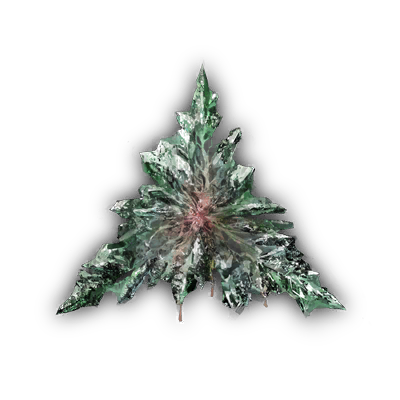
- Rune of Eruption. While this rune is inserted and you apply a paper to the trick weapon, the next successful weapon attack you make with the trick weapon deals an additional Hunter Die damage of the paper's damage type.
Additional Runes. For every rune inserted, the initial weapon attack deals an additional Hunter Die damage of the paper’s damage type.
Tier 2 Runes
- Rune of Esoterica. While this rune is inserted and you apply a paper to the trick weapon, you can now choose from one of the following damage types for the paper: necrotic, psychic, radiant or thunder.
Tier 3 Runes
- Rune of Infusion. While this rune is inserted, the trick weapon’s weapon attacks deal an additional Hunter Die damage of one of the following types: acid, cold, fire, lightning, necrotic, psychic, radiant or thunder.
Additional Recipes
At 18th level, you learn two more hunter recipes of your choice.
Paleblood
You have learned countless secrets, none so damning and accursed as your Hunter’s Insight. Your intellect has expanded exponentially, and the recipe of near-immortality is revealed to you. At 18th level, you gain the following benefits:
- You have advantage on all Intelligence, Wisdom and Charisma saving throws.
- You become immune to poison damage and the poisoned condition.
- For every 10 years that pass, your body ages only 1 year.
Covenant of The Eldritch Church
The Covenant of The Eldritch Church holds value in using the enemy's weapons against them. Hunters belonging to this covenant search for and covet accursed relics, items, and other artefacts created or kept by their quarry. They hope not only to understand them but also a means to destroy them.
Spellcasting
When you reach 3rd level, you expand your hunter’s repertoire with eldritch artefacts, granting the ability to cast spells. See chapter 10 for the general rules of spellcasting, and see below for the Hunter spell list.
Cantrips. You learn two cantrips of your choice from the Hunter spell list. You learn an additional cantrip of your choice at 10th level.
Spell Points. The Eldritch Knowledge Spellcasting table shows how many spell points you have to cast your hunter spells of 1st level and higher. To cast one of these spells, you must spend spell points equal to the spell cost, detailed in the Spell Cost table. You regain all expended spell points when you finish a long rest.
For example, if you know the 1st-level spell Arms of Hadar, you can cast Arms of Hadar using 2 spell points.
Spells Known of 1st-level and Higher. You know three 1st-level hunter spells of your choice.
The Spells Known column of the Eldritch Knowledge Spellcasting table shows when you learn more hunter spells of 1st level or higher. Each of these spells must be of a level equal to or lower than the Max Level column. For instance, when you reach 7th level in this class, you can learn one new spell of 1st or 2nd level.
Whenever you gain a level in this class, you can replace one of the hunter spells you know with another spell of your choice from the hunter spell list. The new spell must be of a level equal to or lower than the Max Level column.
Spellcasting Ability. Intelligence is your spellcasting ability for your hunter spells, as you learn your spells through study and collection of artefacts. You use your Intelligence whenever a spell refers to your spellcasting ability. Additionally, you use your Intelligence modifier when setting the saving throw DC for a hunter spell you cast and when making an attack roll with one.
Spell save DC = 8 + your proficiency bonus + your Intelligence modifier
Spell attack modifier = your proficiency bonus + your Intelligence modifier
Quicksilver Transmutation
At 3rd level, you can expend your Quicksilver Bullets to cast spells, turn spell points into Quicksilver Bullets and vice versa:
- As a bonus action, you can spend 3 spell points to create a Quicksilver Bullet, or expend a Quicksilver Bullet to gain 2 spell points.
- You can cast one of your hunter spells by expending a number of Quicksilver Bullets equal to the level of the spell.
Hunter Mimicry
At 6th level, you know the disguise self spell. It does not count against your spells known and is considered a hunter spell for you. Additionally, this version of the spell has the following modification:
- You can disguise yourself as a Medium or Small inanimate object, instead of a humanoid.
Hunter Magic
At 6th level, whenever you take the Attack action on your turn, you can cast one of your cantrips in place of one of your attacks.
Spell Cost
| Spell Level | Spell Point Cost |
|---|---|
| 1st | 2 |
| 2nd | 3 |
| 3rd | 5 |
| 4th | 6 |


Divinity through Damnation
Beginning at 13th level, your exposure to accursed relics and unholy sites has inured you to curses and some of their worst effects. Whenever you attune to a magic item, you immediately know if it is cursed and learn the properties of the curse, and can choose to end your attunement. You have advantage on any saving throw related to a cursed magic item.
Additionally, you can suppress a magic item's curse while you remain attuned to it. You can only suppress one cursed magic item at any time.
Arcane Runes
You have learned new runes unique to your covenant. Beginning at 13th level, you can slot these runes into your trick weapons’ rune slots in addition to your hunter runes:
Tier 1 Runes
- Rune of Acceleration. While this rune is inserted and you take the Attack action on your turn, you can cast one of your hunter spells in place of one of your attacks.
- Rune of Focus. While this rune is inserted, the trick weapon is considered a spell focus for your hunter spells.
Tier 2 Runes
- Rune of Brilliance. While this rune is inserted, attack and damage rolls made with the trick weapon can be made with Intelligence instead of Strength or Dexterity. Additionally, the trick weapon's Save DC is calculated using Intelligence instead of Strength or Dexterity
| Hunter Level | Cantrips Known | Spells Known | Spell Points | Max Level |
|---|---|---|---|---|
| 3rd | 2 | 3 | 4 | 1st |
| 4th | 2 | 4 | 6 | 1st |
| 5th | 2 | 4 | 6 | 1st |
| 6th | 2 | 4 | 6 | 1st |
| 7th | 2 | 5 | 14 | 2nd |
| 8th | 2 | 6 | 14 | 2nd |
| 9th | 2 | 6 | 14 | 2nd |
| 10th | 3 | 7 | 17 | 2nd |
| 11th | 3 | 8 | 17 | 2nd |
| 12th | 3 | 8 | 17 | 2nd |
| 13th | 3 | 9 | 27 | 3rd |
| 14th | 3 | 10 | 27 | 3rd |
| 15th | 3 | 10 | 27 | 3rd |
| 16th | 3 | 11 | 32 | 3rd |
| 17th | 3 | 11 | 32 | 3rd |
| 18th | 3 | 11 | 32 | 3rd |
| 19th | 3 | 12 | 38 | 4th |
| 20th | 3 | 13 | 38 | 4th |
Tier 3 Runes
- Rune of Discombobulation. While this rune is inserted, creatures hit by the trick weapon’s melee weapon attacks or Active Ability have disadvantage on the next saving throw you force them to make using a hunter spell before the end of your next turn.
Godless Incantations
At 18th level, when you cast a hunter spell, you can expend one of your Hunter Dice to add a Hunter Die to your Saving Throw DC for this casting of the spell. You can only expend one of your Hunter Dice per use of this feature.
Strange Aeons
From the furthest void, you have plundered artefacts and secrets. Voiceless beings, formless powers, and incomprehensible gods stared into you, and you stared back - and you did not blink. Now what they know is yours. At 18th level, you gain the following benefits:
- When you complete a long rest, you can select any spell that is 8th level or lower from any class’ spell list. You can cast this spell once and must finish a long rest before you can use this feature again. You can use Intelligence as the spellcasting modifier for this spell; however, it is not considered a hunter spell for you.
- You can ignore the verbal and somatic components of your hunter spells, as well as any material components that lack a cost and aren’t consumed by a spell.
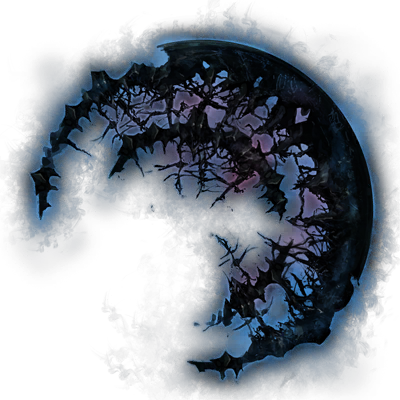
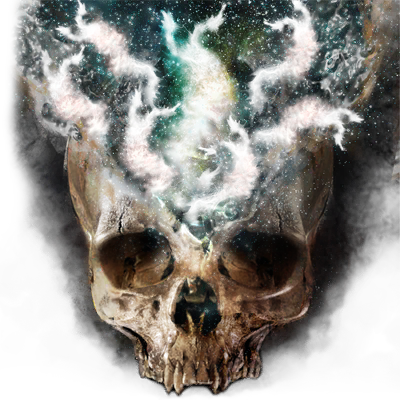
Hunter spells
Cantrips (0 Level)
- Booming Blade
- Chill Touch
- Create Bonfire
- Green-Flame Blade
- Magic Stone
1st Level
- Arms of Hadar
- Chromatic Orb
- Cure Wounds
- Magic Missile
- Thunderwave
2nd Level
- Blur
- Lesser Restoration
- Locate Object
- Magic Weapon
- Misty Step
3rd Level
- Bestow Curse
- Call Lightning
- Haste
- Lightning Bolt
- Remove Curse
4th Level
- Death Ward
- Dimension Door
- Dominate Beast
- Evard's Black Tentacles
- Locate Creature
Trick Weapons
The Hunt is an endless, deadly gauntlet. It is dangerous to go alone, and suicidal to go unprepared. Over the years of hunting and adapting to new, evolved quarry, hunters have crafted weapons of advanced design. These weapons eventually came to be known as trick weapons.
A trick weapon's forms are defined as weapon types. These weapon types determine what the properties and damage rolls of the trick weapon are in its forms. Use the alternate form for a trick weapon's weight. Some trick weapons have additional or differing properties to its weapon types. The following table shows what a trick weapon's weapon type is in its standard form and alternate form respectively:
| Trick Weapon | Weapon Type |
|---|---|
| Bloodletter | Mace, Morningstar |
| Boom Hammer | Warhammer |
| Burial Blade | Longsword, Glaive |
| Holy Moonlight Sword | Longsword, Greatsword |
| Hunter Axe | Battleaxe, Halberd |
| Kirkhammer | Longsword, Maul |
| Rifle Spear | Spear, Lever-Action Rifle |
| Sawcleaver | Scimitar, Longsword |
| Sawspear | Scimitar, Spear |
| Stake Driver | Dagger, Shortsword |
| Threaded Cane | Rapier, Whip |
| Whirligig Saw | Mace, Greatsword |
Bloodletter
An accursed weapon, the Bloodletter is a trick weapon devised by mad hunters who delved too deeply into blood magic. This trick weapon is considered heretical by the Eldritch Church. It is a barbaric-looking mace that beats victims bloody and can be thrust into one’s own chest, paying a blood debt. The weapon re-emerges with the hunter’s own blood, forming cruel, sharp spikes at the ends of the blasphemous tool that cling on with glistening bloody tendrils.
-
Special Transformation. Whenever you use a bonus action to transform this weapon from its standard form into its alternate form, roll a number of Hunter Dice of your choice up to your proficiency bonus (minimum of one Hunter Die). You take an amount of necrotic damage equal to the total result. This damage cannot be reduced in any way. If this damage reduces you to 0 hit points, the weapon devours your innards and drinks your blood, killing you instantly.
-
Active Ability. The bloody spikes and tendrils that infect the weapon quiver with anticipation. Make a melee weapon attack against a creature of your choice within range. On a successful hit, roll twice the number of Hunter Dice rolled when you transformed the weapon. The target creature takes an additional amount of necrotic damage equal to the result. Whether you hit or miss, the blood then splatters and is discarded from the weapon, reverting to its standard form.
Boom Hammer
A tremendous hammer outfitted with a miniature furnace, the Boom Hammer is one of the prized designs of the hunter-tinkerers. This trick weapon is a brutal warhammer capable of bruising flesh and shattering bone. Igniting the furnace causes the head to erupt with flame, scathing its foes.
-
Weapon Properties. While in its alternate form, the Boom Hammer's successful weapon attacks deal an additional 1d4 fire damage
-
Transformation Attack. You drag the head of the hammer across the floor, sending sparks flying into the furnace or otherwise triggering the ignition. Make a melee weapon attack against a creature within range. On a successful hit, the creature takes an additional 2d4 fire damage from the erupting furnace. The weapon then transforms.
-
Active Ability. Make a melee weapon attack against a creature of your choice within range. The hammer’s furnace overheats, causing a sudden fiery expulsion at the moment of impact. On a successful hit, the target creature takes an additional Hunter Die fire damage and must make a Strength saving throw. On a failed save, the creature is knocked a number of feet away equal to five times your proficiency bonus. If the creature collides with an object or surface, it takes 1d6 bludgeoning damage for every 10 feet travelled. If the creature collides with another creature, both creatures take the same bludgeoning damage.
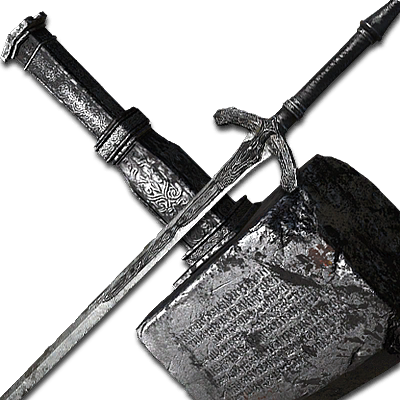
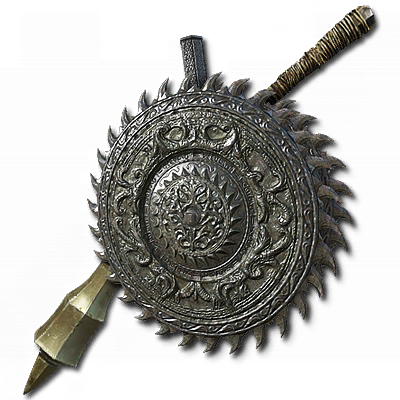
Burial Blade
A revered weapon, fashioned by one of the founding hunters. This charnel blade was the first trick weapon ever devised, inspiring the development of other trick weapons. The Burial Blade is a crooked blade that becomes an immense scythe capable of reaping whole collections of foes, like separating the chaff from the wheat.
-
Weapon Properties. The Burial Blade has the finesse property in both its standard and alternate form.
-
Transformation Attack. You quickly backstep, moving 5 feet away from a creature within range. If you leave the creature’s range, you do not provoke an attack of opportunity. You then transform the weapon, and make a melee weapon attack against the creature you moved away from.
-
Active Ability. You draw back the scythe before making a massive horizontal swing. The arc of your swing is a 15-foot-wide, 10-foot-long line originating from you. Each creature in the line must make a Dexterity saving throw. On a failed save, a creature takes damage equal to your weapon damage roll. On a successful save, a creature takes half as much damage.
Holy Moonlight Sword
The Holy Moonlight Sword is a blessed weapon of the Eldritch Church. Etched with arcane runes, the blade comes alive in blue moonlight, manifesting a luminous phantom greatsword from the hilt. The eldritch magicks can then channel the abyssal cosmos, hurling a shadowy lightwave.
-
Weapon Properties. The Holy Moonlight Sword is magical while in its alternate form.
-
Transformation Attack. You murmur the arcane incantation etched upon the blade, causing it to flare with cosmic radiance. The weapon transforms, and you make a melee weapon attack against a creature within range. On a successful hit, the damage becomes radiant for the duration of this melee weapon attack.
-
Active Ability. A wave of cosmic energy pulses outward from the sword in a 10-foot-wide, 30-foot-long line. Each creature in the line must make a Constitution saving throw. On a failed save, a creature takes two Hunter Die radiant damage. On a successful save, it takes half as much damage.
Hunter Axe
A tool commonly used on The Hunt, the Hunter Axe is a mighty warrior's axe that can transform into an extended polearm that is capable of striking every enemy who dares surround the hunter.
- Transformation Attack. You begin to attack a creature that is 10 feet away. If the creature can see you, it believes the attack is out of range and does not defend against it. You then transform your trick weapon and make an attack roll with advantage. This transformation attack can only grant advantage against the same creature once per combat encounter.
- Active Ability. Creatures within 10 feet of you must make a Dexterity saving throw. A target takes damage equal to your weapon damage roll on a failed save, or half as much damage on a successful one.
Kirkhammer
The Kirkhammer is a divine relic of the Eldritch Church. This silvered sword is an ornamental piece for the church-hunters, but its symbolism is found in the burden of the obtuse stone block one must carry with it. Sword and stone can be combined to form a humbling maul.
-
Weapon Properties. The Kirkhammer is silvered in its standard form.
-
Transformation Attack. You grab the stone block and attempt to flatten a creature of your choice within range. Make a melee weapon attack. On a successful hit, a target creature takes 3d6 + your Strength modifier bludgeoning damage and must make a Strength saving throw or fall prone. You then slot the sword into the block as it rests upon the target creature and transform the weapon. If you miss or the target succeeds its saving throw, you do not transform the weapon.
-
Active Ability. You slam the maul into the ground, causing a shockwave in the shape of a 30-foot cone. Each creature in the cone must make a Strength saving throw. On a failed save, a creature takes 2d6 bludgeoning damage and falls prone. A creature that succeeds on its saving throw takes half as much damage and isn’t knocked prone.
Rifle Spear
A simple yet clever invention of the hunter-tinkerers, the Rifle Spear combines a lever-action rifle with a short blade affixed to its end. The blade can be withdrawn for firing or extended to strike foes who draw too close to the hunter.
-
Weapon Properties. The Rifle Spear has the heavy and two-handed properties in its standard form, and it does not have the light property.
-
Active Ability. Choose one creature within range. Make a ranged weapon attack with disadvantage, and then move 5 feet towards the creature. Repeat this a number of times equal to your proficiency bonus. If one of these attacks brings you within 5 feet of the chosen creature, you transform the weapon and make a single melee weapon attack. On a successful hit, the creature takes additional damage equal to the weapon’s alternate form damage roll as you fire the rifle while the muzzle is buried inside the creature or placed against them. This ability ends if you are incapable of moving towards your chosen creature or the firearm must be reloaded before it can fire again.
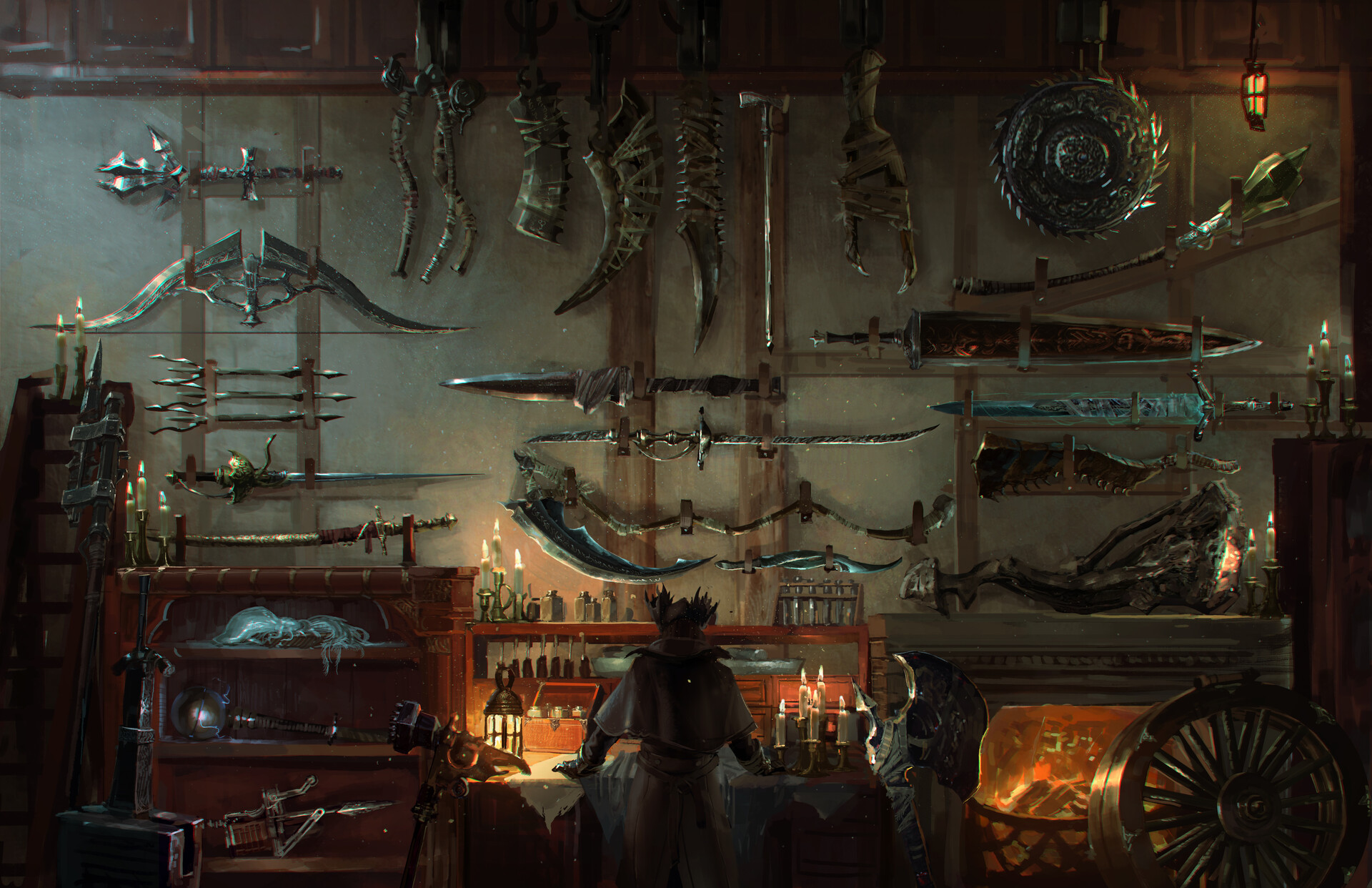
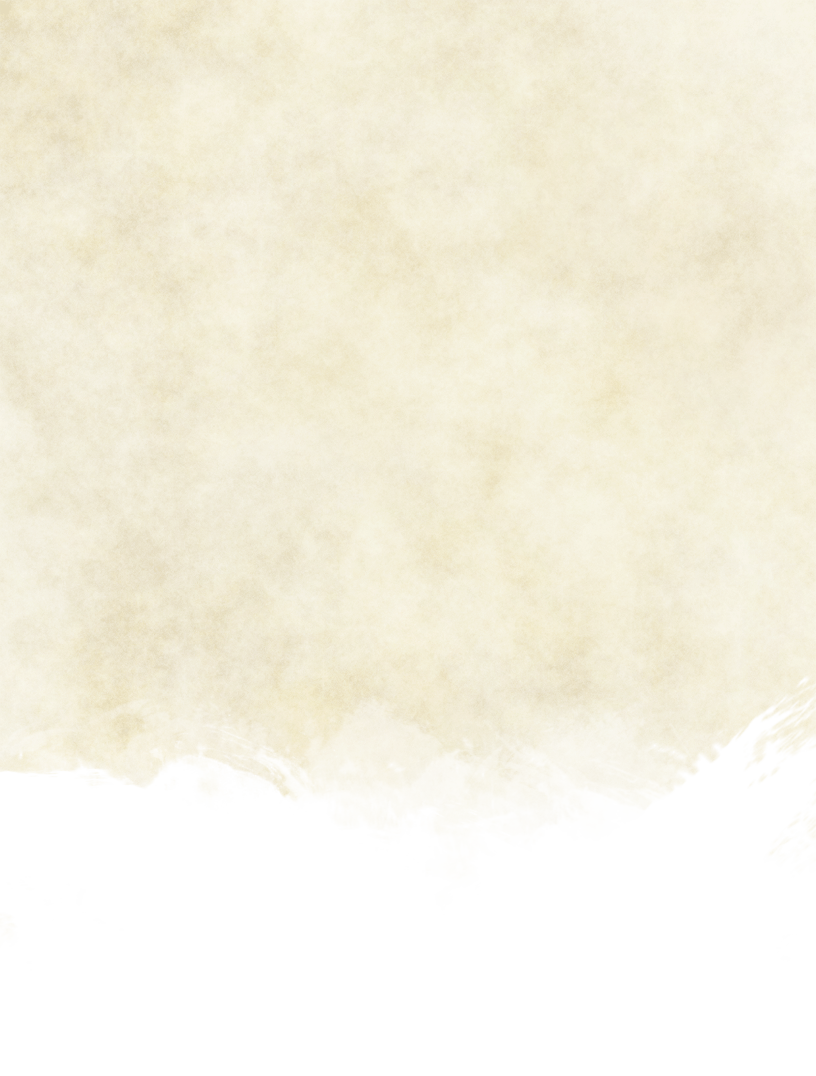
Sawcleaver
The Sawcleaver is a staple of hunters, typically wielded by those with strength of arm. This weapon is an easily wielded blade that can be transformed into a lengthened edge, capable of cleaving through whole groups of foes.
-
Weapon Properties. The Sawcleaver does not have the light property in its standard form.
-
Active Ability. Make a melee weapon attack against a creature of your choice within range. Regardless of whether you hit or miss this creature, you can attempt to damage a number of creatures of your choice equal to your proficiency bonus within 5 feet of that creature, but no more than 10 feet away from you. If the original attack roll would hit any of those creatures, it takes damage equal to the damage roll of your original attack.
Sawspear
An alternative option for beginner hunters. The Sawspear is capable of being wielded with more finesse. This weapon is an easily wielded blade that can transform into a serrated spear, capable of rending foes like a hacksaw through wood.
-
Weapon Properties. The Sawspear has the finesse property in its alternate form, and does not have the light property in its standard form.
-
Active Ability. Make a melee weapon attack against a creature of your choice within range. On a successful hit, you thrust the weapon deep into the creature’s side, rending them. At the start of its next turn, it takes necrotic damage equal to a number of Hunter Dice equal to your proficiency bonus.
Stake Driver
An invention of the hunter-tinkerers. The Stake Driver, with its queerly complex design, violently drives thick stakes into the flesh of foes. When the mechanism is activated, it delivers powerful thrusting strikes and can be primed to deliver an absurdly powerful blow, albeit at the risk of exposing the hunter.
- Weapon Properties. The Stake Driver deals slashing damage in its standard form.
- Active Ability. Make a melee weapon attack against one creature within range. On a successful hit, the attack becomes a critical hit. However, on a miss, all creatures have advantage on attack rolls against you until the start of your next turn.
Threaded Cane
Often carried into civilised lands as a discreet weapon by Hunters, the Threaded Cane is a slender rapier disguised as a walking cane that can be thrust with grace, but also splits into a dreadful whip capable of lashing out at every foe who stands before you.
-
Weapon Properties. The Threaded Cane's alternate form damage roll scales with your Hunter Die.
-
Active Ability. All creatures in a 20-foot cone originating from you must make a Dexterity saving throw. A target takes two Hunter Die + your Strength or Dexterity modifier (your choice) damage on a failed save, or half as much damage on a successful one.
Whirligig Saw
One of the more mechanically complex trick weapons, the Whirligig Saw was developed by inventive hunter-tinkerers. This trick weapon is a hefty mace with which to thrash foes, but it becomes a horrifying ensemble of screaming, spinning teeth that devours flesh and metal.
-
Transformation Attack. You grab the axis of the serrated blades and make a melee weapon attack against a creature within range. On a successful hit, the creature takes 3d6 + your Strength modifier slashing damage. After the attack, you attach the blades to the mace, transforming the weapon. If you miss, the attachment does not occur.
-
Active Ability. You move in a straight line in a direction of your choice for your remaining movement on your turn, pointing the saw in that direction. During this action, you can move through a hostile creature’s space, ignore difficult terrain, and do not provoke opportunity attacks. Every creature you pass through must make a Dexterity saving throw. A creature takes damage equal to your weapon damage roll on a failed save, or half as much damage on a successful one. If you collide with an object or surface you cannot destroy, you come to a stop.
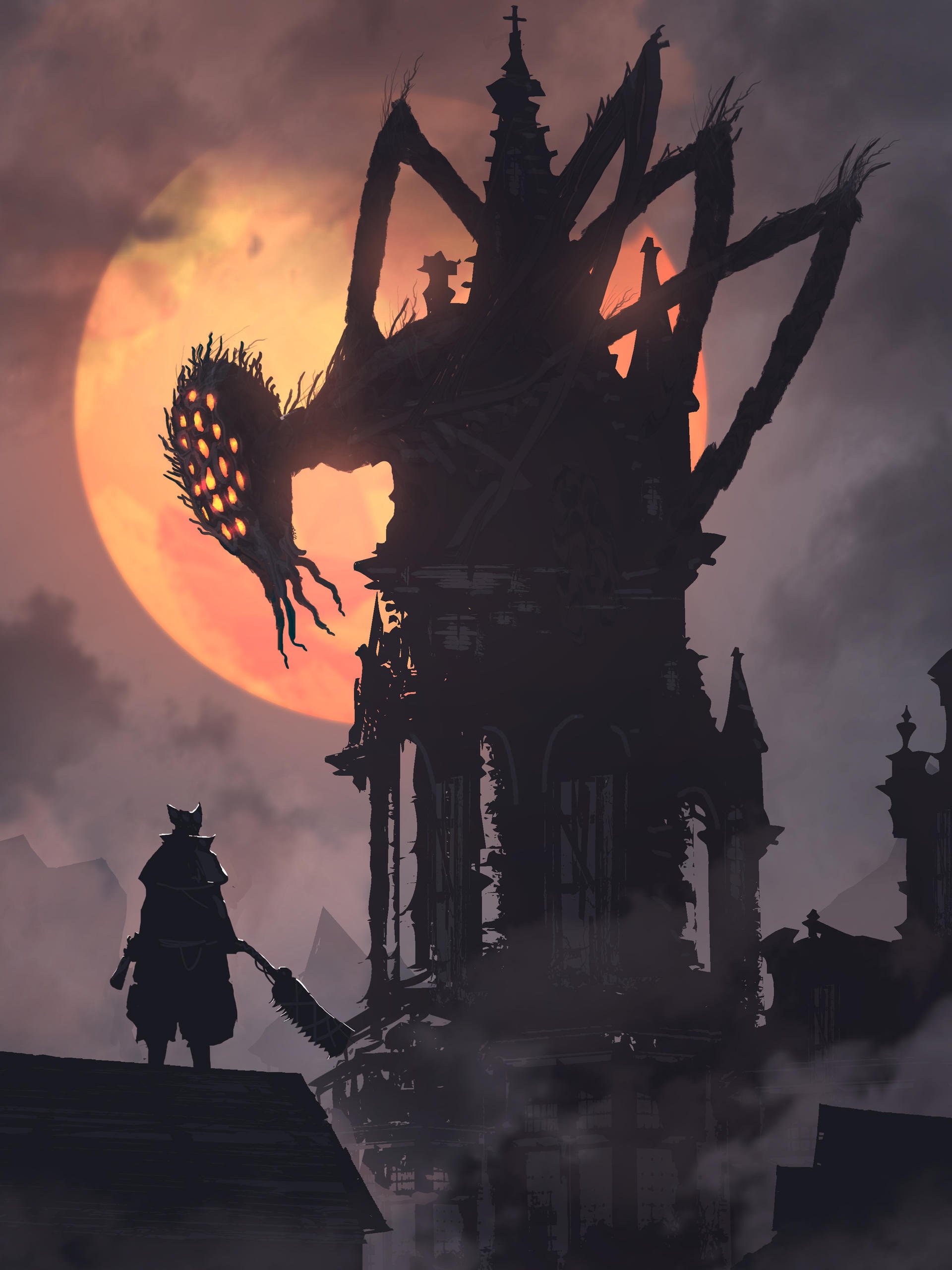

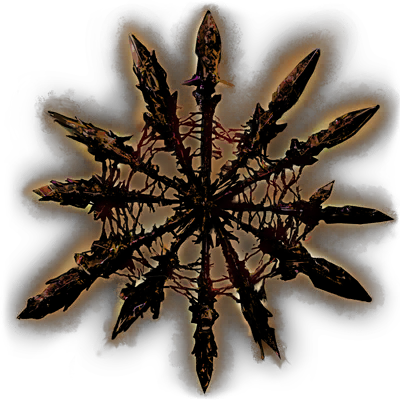
Hunter Runes
Through the blood gems you have plundered from your foes, you have found a means of empowering your trick weapons. These blood gems have unlocked new potential in your trick weapons, granting them ‘rune slots’ for every upgrade a trick weapon receives.
You know how to insert hunter runes into these rune slots, and you can add or remove runes from your trick weapons during a short or long rest. Each rune provides a unique benefit and falls under one of three ‘tiers’. Each rune requires a number of rune slots equal to its tier. For example, the tier 1 Rune of Unrelenting requires one rune slot, and the tier 2 Rune of Agility requires two rune slots. Some runes can be slotted several times. Beginning at 11th level, you know the following hunter runes:
Tier 1
- Rune of Unrelenting. While this rune is inserted, you can activate the trick weapon’s Active Ability an additional time between rests.
Additional Runes. For every rune inserted, you can active the trick weapon's Active Ability an additional time between rests.
-
Rune of Thirsting. While this rune is inserted, the trick weapon’s Active Ability allows you to regain hit points using your The Hunt Begins feature. When an Active Ability deals damage to multiple creatures, you regain hit points for every creature who takes damage.
-
Rune of Alacrity. While this rune is inserted, you can activate the trick weapon's Active Ability as a bonus action.
-
Rune of Enchantment. While this rune is inserted, the trick weapon counts as magical for the purpose of overcoming resistance and immunity to nonmagical attacks and damage.
Tier 2
- Rune of Harvesting. While this rune is inserted, reducing a hostile creature with a Challenge Rating of at least 1 to 0 hit points with the trick weapon allows you to regain one of your Hunter Dice instead of acquiring a blood gem. This rune can only activate once per round.
Additional Runes. For every rune inserted, you can regain an additional Hunter Dice per round.
- Rune of Agility. While this rune is inserted, the trick weapon gains the Finesse property.
Tier 3
- Rune of Mastery. While this rune is inserted and you take the Attack action on your turn, you can attack three times instead of twice.
Firearm Supplement
A freebooter locks blades with a sailor of the navy, he nonchalantly draws his pistol and shoots the sailor in the gut, sending him reeling. The pirate cackles, gleeful from his dirty victory.
A desperado holds her rifle close, bullets from the rival gang's gatling gun whizz past her head, poking holes in the saloon's walls. She takes a deep breath, jolts upward and eyes the bandits down the barrel of the gun. The red mist soon follows.
The following table is an optional addition that introduces firearms into your setting and enables the hunter class to incorporate them. If your world is set during the golden age of piracy or the colonial era, the flintlock firearms section will provide appropriate weapon options for those time periods. Alternatively, if your setting takes place during the gold rush with frontiersmen, desperados, and prospectors, the industrial firearms section offers suitable choices for that particular era.
Weapon properties
Firearms introduce new properties, as shown in the Firearms table.
Reload. This firearm must be reloaded after it has been fired a number of times equal to the number after this property. A flintlock firearm requires an action to reload. An industrial firearm requires an action to reload, however, a single bullet can be inserted into the firearm using one of your remaining attacks with the Attack action.
Spread. This firearm sends shot or shrapnel everywhere in front of the gunner, making it likely you’ll hit something. Even if it isn’t what you aimed for.
If you miss with a firearm that has this property, make a ranged attack roll against a random creature within 5 feet of your missed target. On a successful hit, the creature takes damage equal to the firearm’s damage roll.
Superheavy. This weapon is exceptionally heavy. Only Medium or larger creatures with a Strength score of 15 or higher can use this weapon.
Misfire. All firearms have this property. When you roll a 1 on a ranged attack roll with any firearm, the firearm misfires. A misfired firearm cannot be used until the misfire is cleared. A misfired flintlock firearm can be cleared using an action. A misfired industrial firearm requires an action to make an Intelligence (Firearms) check (DC 10). On a success, the misfire is cleared. On a failure, the firearm remains misfired.
Special Weapons
Firearms with special rules are described here.
Break-Action Shotgun. When you make a ranged weapon attack with a break-action shotgun, you can fire both barrels at once to deal an additional 1d8 damage on a successful hit. This is considered two uses for the Reload property.
Gatling Gun. A gatling gun cannot be carried and fired at the same time. It cannot be fired until a creature uses an action to set it up. When you use an action, bonus action, or reaction to attack with a gatling gun, you can make only one attack per round regardless of the number of attacks you can normally make.
Additionally, as an action, you can fire the gatling gun in a 10-foot-wide, 50-foot-long line. Creatures in this line must succeed on a DC 11 Dexterity saving throw or take 4d10 piercing damage.
Pistol. You can draw a pistol as part of the attack you make with the pistol.
Firearms
| Name | Cost | Damage | Weight | Properties |
|---|---|---|---|---|
| Flintlock Firearms | ||||
| Blunderbuss | 250 gp | 2d8 piercing | 8 lb. | Ammunition (range 20/60), heavy, reload 1, spread, two-handed |
| Dragon | 300 gp | 2d8 piercing | 4 lb. | Ammunition (range 15/45), reload 1, spread |
| Hand Cannon | 450 gp | 2d10 piercing | 35 lb. | Ammunition (range 30/90), reload 1, superheavy, two-handed |
| Musket | 200 gp | 1d12 piercing | 10 lb. | Ammunition (range 80/320), heavy, reload 1, two-handed |
| Pepperbox | 400 gp | 1d8 piercing | 4 lb. | Ammunition (range 40/120), reload 4 |
| Pistol | 100 gp | 1d8 piercing | 3 lb. | Ammunition (range 40/120), light, reload 1, special |
| Industrial Firearms | ||||
| Break-Action Shotgun |
500 gp | 2d8 piercing | 8 lb. | Ammunition (range 30/90), heavy, reload 2, special, two-handed |
| Break-Action Shotgun, Sawed-Off |
── | 2d8 piericng | 6 lb. | Ammunition (range 20/60), reload 2, special, spread |
| Gatling Gun | 1000 gp | 4d10 piercing | 170 lb. | Ammunition (range 50/200), heavy, reload 1, special |
| Lever-Action Rifle | 600 gp | 1d12 piercing | 10 lb. | Ammunition (range 160/640), heavy, reload 8, two-handed |
| Revolver | 350 gp | 1d8 piercing | 4 lb. | Ammunition (range 60/180), reload 6 |
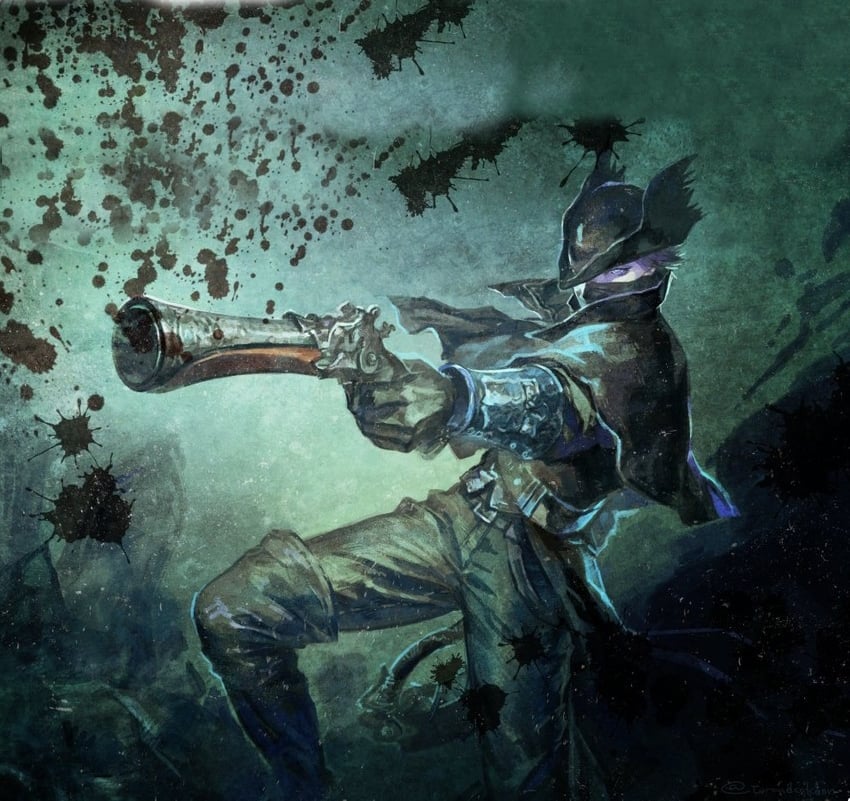
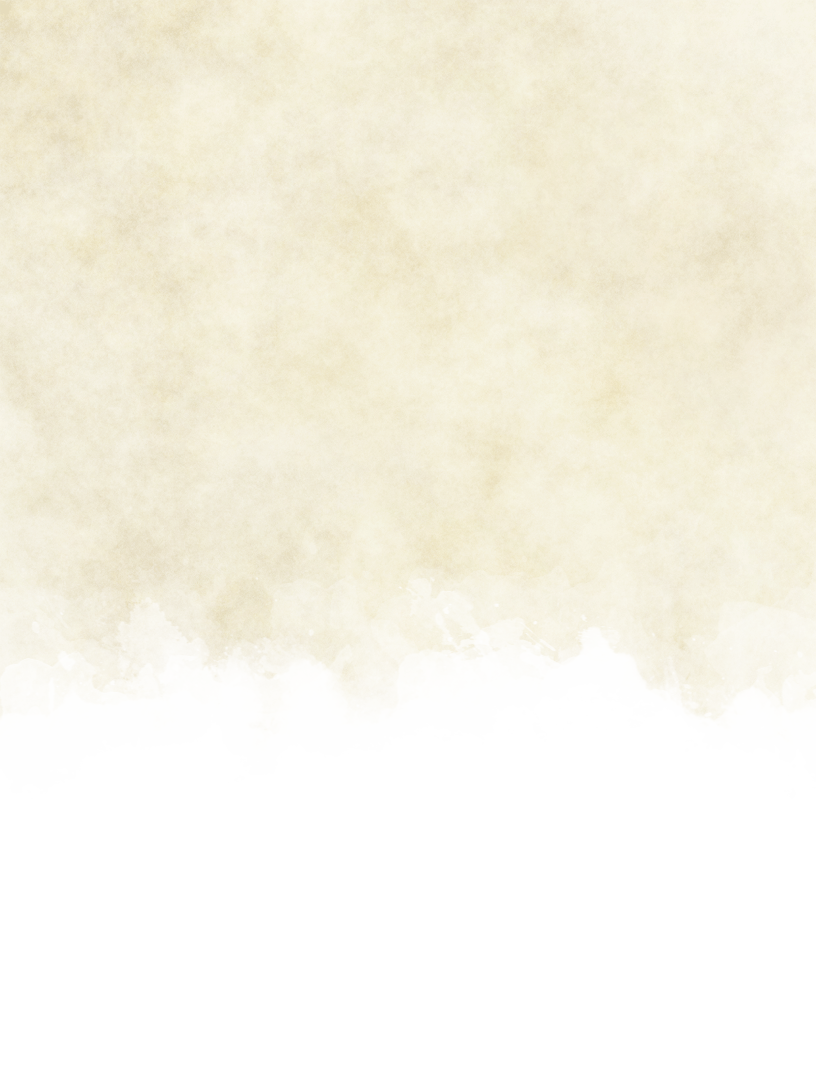
| Ammunition Type | Cost |
|---|---|
| Flintlock, Ball and Shot | 5 cp |
| Flintlock, Hand Cannon | 1 gp |
| Industrial, Bullet and Cartridge | 1 sp |
| Industrial, Gatling Magazine | 10 gp |
Gunner
An alternative to the Gunner feat found in Tasha's Cauldron of Everything, this version incorporates the new firearm weapons and properties.
- Increase your Dexterity score by 1, to a maximum of 20.
- You gain proficiency with firearms.
- You can reload a flintlock firearm as a bonus action.
- You can insert two bullets, instead of one bullet into an industrial firearm whenever you use one of your remaining attacks with the Attack action to reload it.
- Being within 5 feet of a hostile creature doesn't impose disadvantage on your ranged attack rolls.
Compromising on Firearms
If your Dungeon Master has permitted you to play this custom class but is hesitant about firearms being integrated into their world, here are some suggested compromises to minimize their impact on the overall setting:
- Firearms are unique to the covenants of hunters. Their designs are closely guarded secrets and to give one up willingly is considered sacrilege. It is extremely unlikely to find a firearm outside the order of hunters.
- Firearms are esoteric and magical in their functionality. They aren't 'true' firearms, and ammunition is a material component to allow these weapons to function. Their inventors are wizards and artificers, and are made in a similar way to conventional magic items.
Firearms in your Setting
Not all Dungeons and Dragons settings feature or allow firearms during play. As this class references firearms several times, it would not be possible to play a hunter in one of these settings. The following is a list of modifications you can make to this class, so it can be played in settings that do not permit firearms:
- The pistol in your starting equipment becomes a hand crossbow.
- Quicksilver Bullets become Quicksilver Bolts.
- The Gun Parry feature is renamed to Crossbow Parry, and you load a Quicksilver Bolt into a crossbow you are holding as part of the attack instead of a firearm.
- The Rifle Spear's alternate form becomes a Heavy Crossbow, and during its Active Ability, you ignore the Loading property.
Furthermore, the more mechanically advanced weapons, such as the Boom Hammer and Whirligig Saw can be interpreted as magical in their functionality, if the setting does not permit technology of that complexity.
- Firearms are limited to flintlocks. the Rifle Spear's alternate form becomes a musket, and during its Active Ability you ignore the Reload property.
If it is impossible to come to a mutual decision regarding firearms between yourself and the Dungeon Master, respect their decision. It is their world, and firearms simply might not fit the vision they have in mind for the campaign.
However, if you are still interested in playing this class, consult the Firearms in your Setting note block above to see how you might modify the class to fit the setting.
Multiclassing
Multiclassing Prerequisites
- Ability Score Minimum. Dexterity 13
When multiclassing into a hunter, you gain only some of the class’ starting proficiencies.
- Weapons. Simple weapons, martial weapons, firearms
- Tools. Alchemist's tools.
Artwork Credit & Sources
The following is a list of all artwork used in this document and their artists or owners in order of appearance. Any art that appears different than its source has been edited by myself to be more appropriate for this document.
Front Cover Page
FromSoftware Inc. Bloodborne Cover Art
Page 2
- FromSoftware Inc. Bloodborne & In-Game Art
- Adrián Prado. Bloodborne Hunter
Page 3
FromSoftware Inc. In-Game Art
Page 4
- Anato Finnstark. Yharnam ( Bloodborne )
- FromSoftware Inc. In-Game Art
Page 5
FromSoftware Inc. In-Game Art & Concept Art
Page 6
- FromSoftware Inc. In-Game Art
- Nattapol_Sritongcom. grunge halloween background with blood splash space on wall
Page 7
- FromSoftware Inc. In-Game Art
- Jeff Stokely. Bloodborne #1
Page 8
- FromSoftware Inc. In-Game Art
- Wizards of the Coast. Cyril Van Der Haegen. DnD Magic Items
Page 9
FromSoftware Inc. In-Game Art
Page 10
- FromSoftware Inc. In-Game Art
- Zaifon. Ludwig, the Holy Blade
Page 11
FromSoftware Inc. In-Game Art
Page 12
FromSoftware Inc. In-Game Art
Page 13
Lisha Du. Fanart: Bloodborne Hunter's Workshop
Page 14
- FromSoftware Inc. In-Game Art
- TacoSauce. Blood Frenzy
Page 16
Oyabin (Shikouann). Hunter with Pistol
Page 17
FromSoftware Inc. Bloodborne
Back Cover Page
Stu_dts. Yharnam
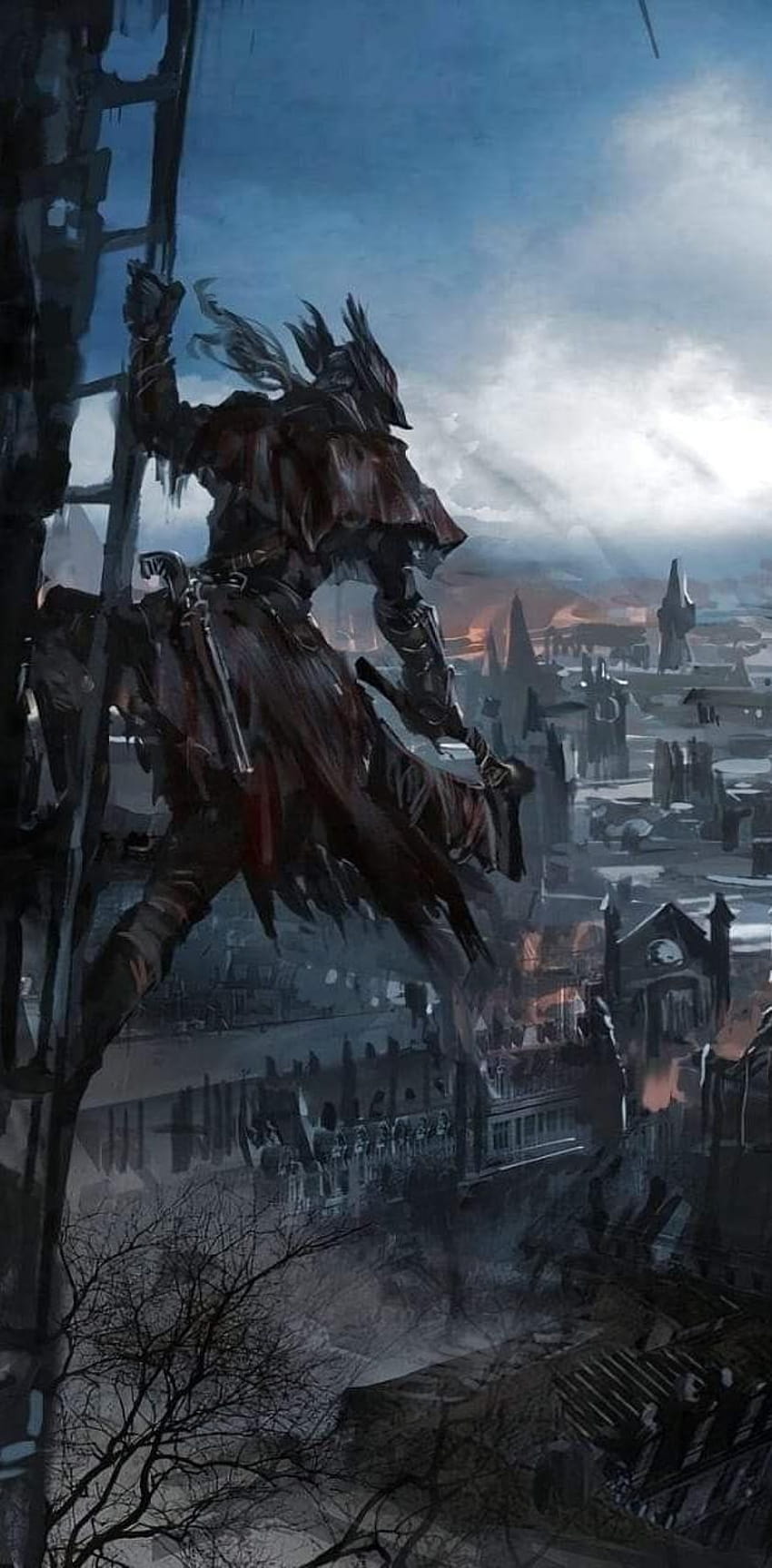
And So
The Hunt Begins
Thank you for taking the time to read through this homebrew class. This project began when one of my players wanted to play a character that embodied the hunter from Bloodborne. With his help and other Bloodborne and 5e enthusiasts, this class is the culmination of that project.
Although this class is heavily inspired by From Software's video game, the lore and contextual information has been made generic so it might more easily gel with other's Dungeons and Dragons settings.
This is the first large-scale project for Dungeons and Dragons 5th Edition that I have undertaken, and it has been something of a labour of love.
I would greatly appreciate any thoughts, criticism or stories of this class in use. So get out there and start hunting.